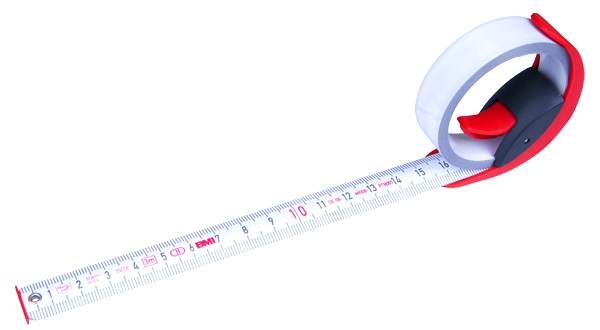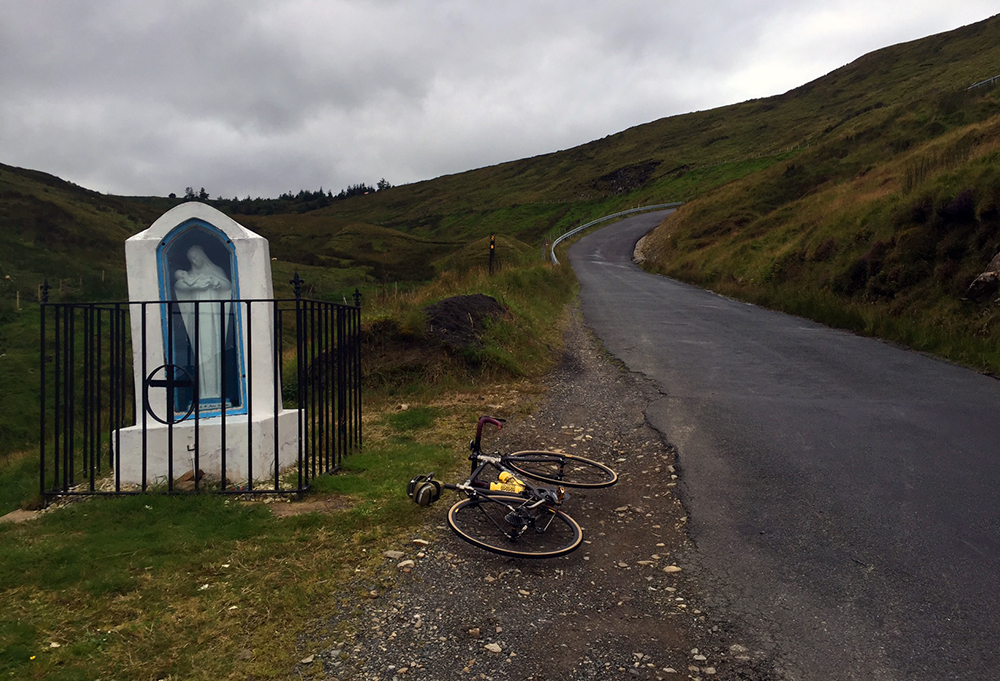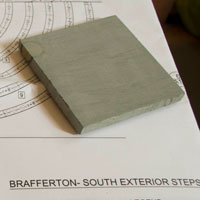


Our guest this week is Luke Khanlian. Luke is a Design Engineer working on a mechanical clock intended to tick for 10,000 years. Starting as a mechanic’s apprentice at age 15, he began to accumulate tools and skills that would lead him to a career in Special Effects for film and television. In the early 2000’s Luke saw an opportunity steer towards Robotics and Rapid Prototyping. While competing in robot combat events, working on film effects and trying to get a small 3d Scanning and Printing business off the ground, Luke landed a job at Applied Minds (a research and development company with close ties to the entertainment industry). For someone interested in all aspects of designing and building things, this was a dream job. After working on many amazing projects, he started to focus primarily on Danny Hillis’s ambitious 10,000 Year Clock Project. It was big step from creating temporary things in the shortest possible time, to monumental objects that will potentially outlast this civilization. In addition to trying to be a good engineer, Luke is also trying to teach his kids that with a few skills and a bit of imagination they can modify, improve and ultimately create their own environment; they can tailor the objects in their lives to suit themselves.
Subscribe to the Cool Tools Show on iTunes | RSS | Download MP3 | See all the Cool Tools Show posts on a single page
Show notes:

Mora Chisel knife (Alternate handle).
“It’s made in Sweden, it’s carved in steel and it looks like a fixed blade knife with a plastic handle. It’s got a square blunt tip, and by blunt I mean it’s squared off at a 90 degree angle at the tip of the knife and so it looks like a woodworkers chisel from the front and a straight knife blade from the side. It allow you to do all kinds of things, and I think it makes a great tool belt or tool bag utility knife. It will cut most anything, certainly opening cardboard boxes and cutting through carpeting and doing all kinds of household chores. It’s also a scraping tool — I often use it to lift the corner of tape or scrape off the label. If you’re a carpenter it’s a great tool to add and if you’re a tinkerer or a homeowner it’s a very inexpensive fun knife to have and it certainly is an eye opener to use. It’s also impervious breaking the tip off if you do pry with it. It’s not intended for prying but tools like this get used for all kinds of things.”

Sculpture House #42 Carbon Steel Spatula
“You can look at a lot of similar tools, dentist tools come to mind, other kinds of epoxy mixing spatulas, but none of them approach the quality that this has. I’ve had this one for 23 years and it’s amazing. I’ve used it for everything from building the molds for various creatures and sculptures and things like that in the past, to currently using it for detailing out 3D prints or picking them off the build surface. The other thing that this tool is really great at is in model building, when you want to apply a sticker or a decal or something like that. You can stick it to the very tip of the flat surface and use it kinda like a single bladed tweezers and lay it in place and make very fine adjustments.”

BMI 2M Quicky Tape Measure
“This is different in that it’s just the metal band, but it’s wound backwards and it’s printed on the convex side of the metal band. When you press your finger on the trigger, the tape extends automatically. It’s unwinding the spring. With one hand you can extend the tape. You can get very accurate measurements and you can also put very accurate pencil lines on your piece. Or use it as a ruler when you’re drawing. I find that I use it as a drawing and layout tool as much as a measuring tool.”

Kraft Paper Roll 60lb. Weight and cutter
“Cover your table with this 60 pound brown craft paper. You can usually find a width that fits the table surface that you usually work on. I like the 60 pound weight because it’s heavy enough that it resists spills and a certain amount of cutting. It’s not so heavy that you feel bad using it or throwing it away when you’re done. The real magic of it is that it acts as a recorder for the story of your project. As I’ve used it in the past, if you’re working with a sculpture or a part, if you’re cutting a piece in half, you can set the half on the table and then trace around it. Now you have a cross section view that you can use to lay out components to go on the inside or to make adjustments in the profile or the design.”
-- Mark Frauenfelder

When I first met my husband, our initial form of “curting” was to walk through the local countryside. Slowly and aimlessly we strolled, talking - what about I don’t even remember now. It was lovely. And, seeing as I was a cyclist, he kept telling me that one day he would get his old bike out of the shed so that we could cycle together. I looked forward to this.
The day came and we arranged to meet with our bicycles. Judging by the time-capsule look of his neon blue aluminium racer and his logo-emblazoned jersey, I believed it when he said he had not been on the bike in over a decade. But that would hardly matter on our romantic meander.
Amidst the lush surroundings of Irish late summer, we set off. The sky was a cornflower blue. The waning afternoon sun shone gently upon us.
Within moments, we were flying at 16mph,
“After this bend coming up, let’s start to crank up the pace.”
Too stunned to reply, I followed his lead. Doing my best to stay on his wheel, I worked harder, pedaled faster. Then faster again,
“What the hell are you doing?!” I panted, eyes bulging out of my head, after three repeats of this and no sign that the rest of our ride would be any different. He looked at me with such genuine, innocent confusion, it nearly melted away my annoyance.
“Cycling?..."
We would not ride bikes together again for months.
The problem with cycling - or, rather, with the word “cycling," at least in the English language - is that it is used to describe a range of very different activities. Riding a bike for transport is grouped together with pedaling for leisure, with using a bike as a brutal athletic workout, even with
Whether this makes cycling conceptually problematic or fascinating, is a matter of perspective. But the point is, when the word cycling is mentioned - be it in conversation, literature, social media, event descriptions, or marketing - we need additional context to know what sort of activity is being referenced.
The number of times I have clicked on articles about “women’s cycling” only to realise they were about women’s racing is staggering.
Then
The
Is an upright bike "better"
Why ever
Why
Why ever would you want a basket on your bike when it produces drag?
Why on earth does anyone need to know their average speed, let alone their cadence?
So often in these debates, people are not so much disagreeing, as talking about entirely different activities, for which they are forced by the limitations of language to use the same word. This can cause some needless frustration and friction.
It can also, however, get us to venture down roads we might have otherwise never considered. The sheer number of vehemently “un-athletic” people I know who started out commuting on vintage 3-speeds and now ride brevets, race cyclocross, go out with fast roadie clubs, compete in time trials.
Semantic confusion is often to blame.
“Oh, you’re a cyclist? So are we. Come join us this Saturday morning!”
It can also go in the other direction. There is a sizable category of people who get into bicycle racing by way of motorsport. They are drawn to the speed and the danger of it, in the same way they are drawn
Discrepancies in our understanding of cycling can take subtler forms.
And no matter how much my concept of cycling expands, there is always room for more; there is always capacity for tremendous, mind-blowing surprise. Last weekend I rode a 100km loop through southern Donegal that nearly made me feel as if I couldn’t ride a bicycle at all - not in the way this place required it of me, anyway. Once again, my concept of what's involved in this umbrella term, cycling, was shaken. And I was reminded, that just when we think we've settled into a comfortable place within the spectrum of self-awareness, we are never quite as experienced, quite as strong, quite as wise or resilient, as we think.
These days I cycle with my husband a lot. Yet we have not compromised toward a joint definition of cycling. Rather, we have each expanded our repertoires to keep the other company. I will join him on hill climbs and on rides the sole purpose of which is speedwork, horrendous painful speedwork. He will join me on going to the shops, on casual meanders with cameras in tow; he has even given touring a try.
And although our house is full of two wheeled contraptions, we hardly ever call it cycling.
"Will you do some intervals with me this evening?”
"I am going to the shops, want to come?"
The bicycle is, of course implied. And misunderstandings are - mostly - avoided. That is not to say that, every now and again, training rides don't get paused for emergency photo-ops. And that "sprinting out of corners" never happens with a pannier


If you’ve spent some time on any men’s style message board or forum, you might think owning a pair of decent quality dress shoes requires hours upon hours of care, cleaning, and effort to maintain. Bull-feathers. It’s just not true. The guys who spend all that time detailing their shoes do it because they like it. It’s similar to the dudes who spend hours babying a fancy car in their garage. Fun for them, but unnecessary. Basic, smart care can keep your investment looking good, all while allowing you to get out the door without too much delay. Here’s how to do it.
Storage:
- Use cedar shoe trees. Shoe trees are like good hangers for your suits and sportcoats. They support the structure of the shoe when not in use. Plus, cedar smells good and helps soak up any leftover moisture your feet have left behind.
- Consider dust bags… maybe. But only if your unworn shoes spend lots of time out in the open, and you go long periods between wearing them. To some, bags just add to clutter.
Like a bra for your shoes. They help support and maintain shape.
Shining/Polishing:
- Supplies: Horse hair brush. Daubers (optional). Old socks, rag, soft cloth, or t-shirt to buff with. Shoe creme (Meltonian does the job well for cheap).
- Method:
- Clean: Brush any dust/dirt off your shoes with the horsehair brush. Use a slightly damp rag for tough stuff. You can also use a leather conditioner/cleaner, but I have yet to actually use any of that stuff. Ever. In my life.
- Apply: Using a dauber or old sock, apply a thin layer of matching shoe creme to the leather. It should look kinda cloudy once applied. Just don’t gob it on.
- Wait: Wait 10-15 min. for the creme to dry. Go make a sandwich or something.
- Brush: Brush the now dried, thin layer of creme with the horse hair brush. Use some some speed/light force.
- Buff: Buff to a shine with a soft cloth or old sock. Tip: Put your foot in the shoe, and elevate it on a sturdy surface like a stair or shine box.
And that’s it. Eat sandwich. Go outside and play.

You really don’t need more than this, and you certainly don’t “need” the box.
Repair:
Find an honest to goodness cobbler. You’ll most likely need new heels before you need a new sole (assuming your shoes can be re-soled). When you do need a new sole, consider their re-crafting service of the maker, if there is one (such as Allen Edmonds.) Nobody knows their own shoes like the manufacturer. Otherwise, look for a cobbler who has been around for a while.
And a heads up: Unless you drag your feet, you’ll need soles a hell of a lot less than you might think. I bought my first pair of Goodyear welted Allen Edmonds in… 2008? 2009? A pair of black Weybridge Oxfords. I’ve worn them a ton since then. They’re my go-to black dress shoes. They haven’t had to be re-soled yet, and neither have any of my other Goodyear welted shoes.

Heels will wear faster than soles, which should take a while to wear down.

